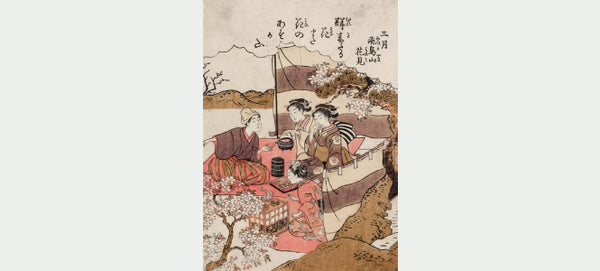Back To The Beginning: History Of Tea
The very elixir of life - ‘tea’ was first known by the world as an all-natural remedy. In addition to that, it now has a reserved spot on everyone’s table, and for all the right reasons! Today, most delightful experiences come at a price either in terms of money, time or wellness. But, a tea indulgence is one of those handful experiences that bring you bliss with zero drawbacks. Inviting appearances, soul-soothing flavours, and enticing aromas that guide you on your way to wellness - everything about a warm cup of tea brings sheer joy. So, where did it all begin? How much do we truly know when it comes to the history of tea?
Which country invented tea? Where did tea originate? When was tea invented? Who invented tea? - if you find yourself pondering upon these questions every time you sip on a refreshing brew, this blog guards all the answers for you. Let’s begin with the origin of tea, and then explore the primary types of teas, along with the health benefits associated with each of them-
History Of Tea: Origin & Evolution
Different cultures across the world harbour their own tea history. Lu Yu because of his book, ‘Tea Classic’ is considered to be the ‘Father of Tea’ in Chinese history. But, it was first discovered by Emperor Shen Nung in ancient China, almost 5,000 years ago (2737 BC).
According to legend, as he rested with his entourage outdoors, a few leaves from a wild tree wafted into his pot of boiling water. Not noticing the change in colour, he sipped the intriguing brew and was instantly enchanted by its delicate flavour and refreshing effect. After sipping the brew, the emperor described a warm feeling as if it was investigating every part of his body. Shen Nung named it "ch'a", the Chinese character meaning to check or investigate. Ancient China thus became the birthplace of tea and the emperor, its inventor.
Tea was introduced formally in India by the British, and then went on to become a tradition throughout the country. The British intended to overthrow China's monopoly on tea, having found that Indian soil was eminently suitable to cultivate these plants. Be it a result of mere coincidence or devised strategies, tea is what most people start their day with today.
Primary Types Of Teas: Processing & Health Benefits
The region and the climate in which it is grown; the time of plucking and the processing techniques - all of these contribute to the quality of the tea. Discover the main types of tea, their characteristics and health benefits, and the processing they undergo-
Green Tea:
Green tea leaves are the least processed of the lot. They do not undergo the oxidation process. The leaves, after being plucked, are allowed to wither for a few hours. They are then steamed or panned to remove the moisture and trap the antioxidants within the leaves. The flavours of the green tea changes from region to region; with more grassy-flavoured green teas coming from Japan, peachy and chocolaty teas from China and gunpowder flavours coming from Taiwan.
Key Health Benefits:
- Ensure higher metabolism
- Boosts immunity against illnesses
- Makes for a great weight loss aid
Black Tea:
Until the mid-17th century, Green tea was prominent in China. As foreign trade increased, black tea rose through the ranks as well. Black tea is created by exposing tea leaves to hot air for several hours after being plucked. The leaves are then rolled to allow essential oils to spread and impregnate the buds. They are then passed through a screen; small leaves go on to the next stage, whereas the bigger leaves are rolled again. These are then dried in an oven to stop the oxidation process. The end result is a full-bodied tea, treasured by tea lovers across the world.
Key Health Benefits:
- Benefits the hair and skin
- Reduces blood pressure and the risk of a stroke
- Lowers blood sugar levels
White Tea:
An exotic indulgence that was once the exclusive privilege of royalty, White teas are the rarest of them all. The young fine shoots are hand-picked at the beginning of the season with the fine silver doves still attached to it. The complex light flavoured tea leaves come from Fujian province in China, Darjeeling in India and some parts of Sri Lanka.
Key Health Benefits:
- Helps keep teeth and gums healthy
- Increases bone density
- May protect against Rheumatoid Arthritis
- Promotes weight management
- Alleviates the signs of ageing
- Improves heart function
- Brings relief from lung ailments
- Improves attention & concentration in children
- Improves bone strength
Oolong Tea:
Oolong tea has been an imperial favourite since it was first introduced to the world. Made from Camellia Sinensis plant, it is slightly fermented and semi-oxidized. Only an expert will know how to extract the right flavour and how much to oxidize it. The tea leaves, which may be oxidized from 20% to 80%, are repeatedly rubbed to generate the correct texture and flavour. From soft floral flavours to nutty, toasty flavours, Oolong tea flavours vary depending upon the level of oxidation.
Key Health Benefits:
Rooibos Tea:
Rooibos, translated to ‘Red Bush’, is a broom-like member of the plant family Fabaceae that grows in South Africa's fynbos. As for the tea origin, it was discovered over a 100 years ago when the residents of the Cederberg realized that the fine needle-like leaves of a mountain bush could be used to make a refreshing hot drink. The fresh tea leaves are bruised, fermented in heaps, sun-dried and sifted. The beauty of the tea lies in its unique characteristics - deep red leaves of Rooibos unfurl to create a beautiful red infusion.
Key Health Benefits:
Order Premium Blends Online from Tea Culture of the World
If lingering tea experiences are what you seek, you’ll find them with Tea Culture of the World. We bring you 80+ exotic tea blends, curated with handpicked ingredients from the finest estates across the globe. Browse through our collections of premium tea blends, order them online, and open your doors to wellness.


